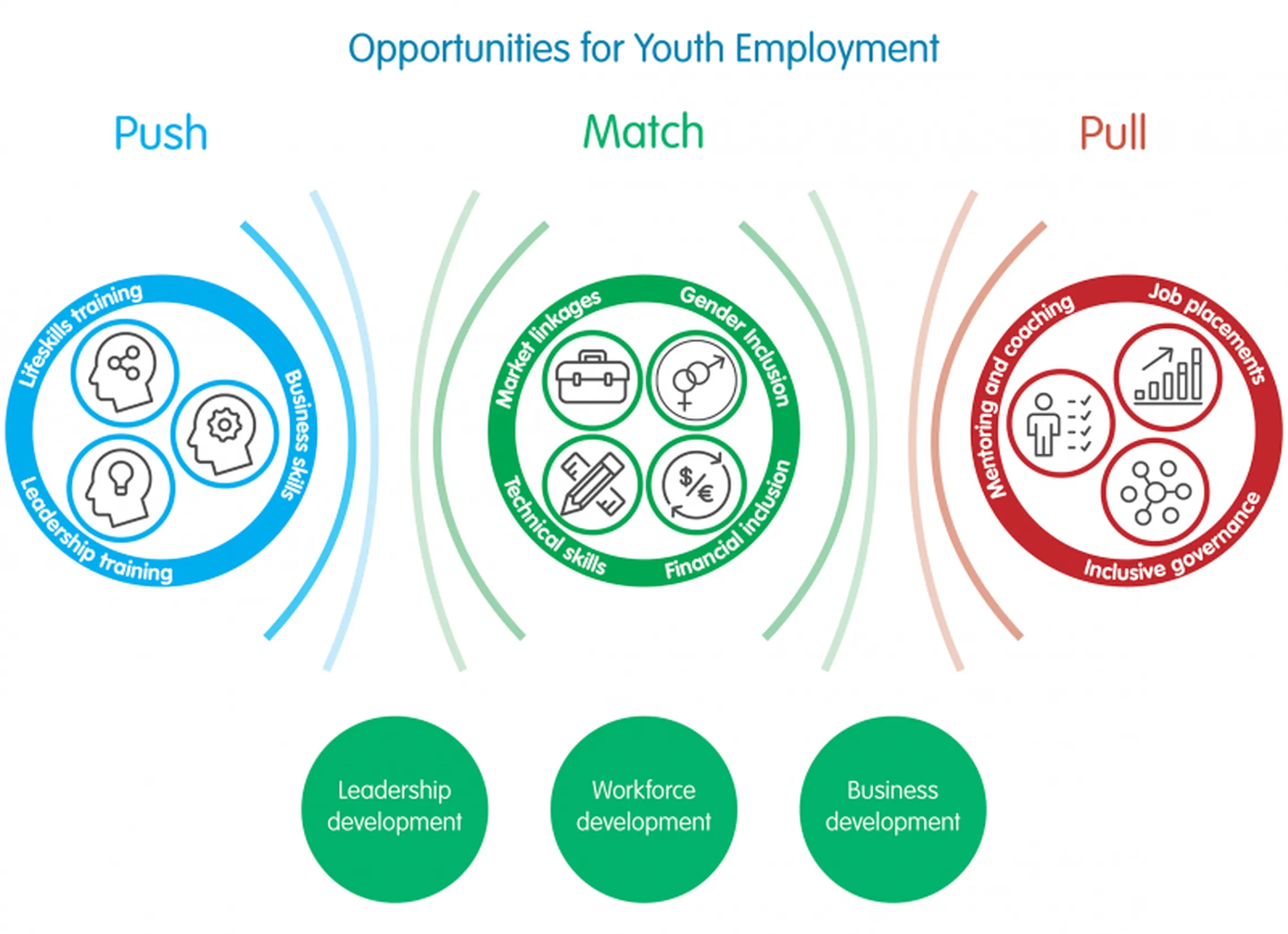Diving into OYE, what makes the approach tick

The SNV Opportunities for Youth Employment (OYE) approach has been effective in creating meaningful employment opportunities for more than 25,000 young people across Africa. We spoke to Tom Derksen, SNV Managing Director for Youth, to gain some insight into what makes this approach effective, how it was developed and where it is headed in the future.
Tom, could you tell us a bit about the history of OYE?
There is a growing sense of urgency and international attention surrounding youth (un) employment in the sub-Saharan region. Therefore, in 2011, SNV decided to develop the Opportunities for Youth Employment approach. To build this, we utilised our sector expertise, and our overall inclusive value chain development approach, and concentrated on the youth employment arena. As such, our approach focuses training on the agriculture and energy sectors, instead of open-ended training which is more customary. Our training is directly linked to market-based opportunities, both in the interest of young people as well as the private sector they engage with. The overall objective is to “make markets work for the youth”.
What is the history of the OYE approach and what are its successes?
Our first major OYE project started in 2013 in Mozambique, Rwanda and Tanzania, based on a partnership between SNV and the Mastercard Foundation. Our approach was embraced by local and national public and private sector partners. In Rwanda, our model has been adopted by the government as one of the most effective ways to create youth employment and entrepreneurship.
The overall outreach target was 20,500 young people. We exceeded our target and by the end of the project in 2018, we had reached more than 26,000 – this was also due to a complementary partnership with SDC to extend the project in Tanzania. This project received excellent mid-term and end of project evaluations. We also had well-documented evidence of our direct results and long-term impact.
Our best results was that our approach empowered young women and men, socially and economically. It became a stepping stone, a trigger that allowed them to turn challenges into opportunities. In the words of a government official in one of these countries, “we considered youth to be a problem. With the OYE approach, they have become assets in our communities”.
Since this first project, the OYE approach has been spreading across countries in Sub-Saharan Africa. Currently we have projects in Mali, Niger, Ethiopia, Mozambique and Tanzania. We have new opportunities emerging in Burundi, Ghana, Uganda and Zambia. The power of the approach is shown by the fact that our projects are funded by a variety of donors, such as the Mastercard foundation, the European Union and SDC. Also, other donors are showing interest in partnering with us.
What sets the SNV OYE approach apart?
Key in the SNV OYE model is the matching of young people with identified opportunities in local agriculture and energy markets. In order to make this market-youth match effective, young women and young men are equipped with the skills that are specifically needed to succeed in the opportunity that they want to pursue (push factor). We support them with a combination of soft and technical skills. Finally, we reinforce employment and entrepreneurship opportunities for young people in local markets (pull), also to make sure that these are really market-based and viable.

The OYE push-match-pull approach
As part of our long-term objectives, we engage local and national partners to develop an ecosystem that is youth-inclusive. This includes to make financing and credit more accessible for young people, one of the main challenges young underprivileged people are facing in building their businesses.
How did we adjust the OYE approach for the Malian context?
The EJOM project in Mali focuses on four themes (horticulture, agri-processing, compost production, and craftmanship). A new dimension in comparison to the previous OYE projects is, that in Mali, we invest in state-of-the-art horticulture farms, due to the fragile context in the intervention areas, with limited economic activities. We want to boost employment opportunities. For the longer term, we aim to develop innovation stations for youth skills training (farmer field schools) and business incubation in horticulture.
Where do you see the OYE approach in the coming years?
As an innovative model for youth employment and entrepreneurship, OYE seeks and develops innovation all the time. Successful implementation and contextualisation of the model can only work with high levels of flexibility, responsiveness and entrepreneurial creativity. In every project and context, we have to test what works and what does not. To be able to do this, we rely on our skilled team and back-stopping experts.
We have learned that innovation is key to attracting young people. They inherently seek out opportunities for development and experimentation and push businesses forward through invention. “Is agriculture attractive to young people?”, is an outdated question. The question or rather the answer is, “young people are the best qualified – because they are young – to make agriculture an attractive and profitable sector, both for themselves and their wider communities”. This entails a more creative focus on inclusive value chains, innovations all along these value chains and a never ending quest for the best gender sensitive solutions for young women and men. Innovation in the nexus between agriculture and energy is a good example – there will be no sustainable agriculture without a renewable energy option.